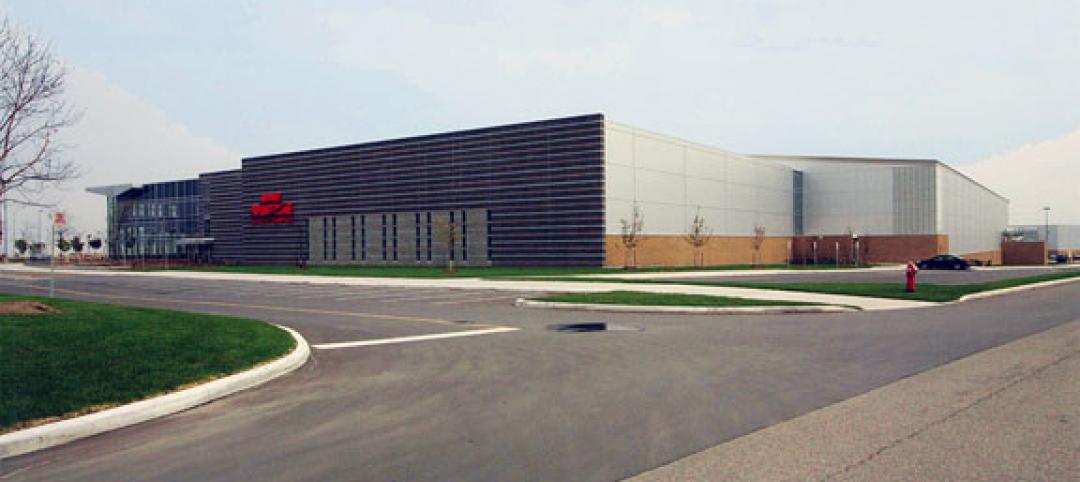Building information modeling is changing the way buildings are designed and constructed. Once regarded as the future of the industry, BIM is now being used by most Building Teams on a daily basis.In a recent survey conducted by Building Design+Construction, more than 75% of respondents indicated they currently use BIM or plan to use it. Respondents were also asked to comment on their experiences with BIM, what they liked and disliked about BIM, and what BIM-related advice they would give to their peers.
How long have you
(or your firm) used BIM?
- More than 5 years: 26%
- Never, and do not plan to use: 23%
- Less than 3 years: 18%
- 3-4 years: 17%
- Never, but plan to use: 16%
N = 115 | Note: Respondents could only make one selection.
Typical responses included: “BIM is a powerful tool for use by architects, engineers, and designers.” “BIM is a great step forward for the architectural design professional thanks to overall coordination of the design documents.” “BIM has paid for itself by saving construction labor man-hours.”
“I find BIM reduces time to create accurate construction documents and quickly produce schematic design visualization for my clients,” commented another respondent. “We’re migrating beyond adoption to companywide integration and pushing beyond that to the full supply chain spectrum to owners, trade contractors, manufacturers, architects, and designers,” added another.
Respondents also commented on their preference for a specific BIM program. “As a long-time user of BIM, we almost exclusively use Revit in all our projects.” “Revit is the only way to go. We’ve been 100% Revit for 10 years.”
Respondent opinion on BIM varied based on their user experience.
“BIM is a great tool that forces early design decisions. However, in the end it is only a tool, the project should not be held hostage by BIM.”
Another mentioned, “We’re almost moving to try to stop talking about BIM. For the first few years we were ‘pushing’; now the ‘pull’ is finally happening. It’s a shift to applied uses and values instead of discussions about technology—solving the problems of internal and external customers. It’s kind of a surprising turn of events—a shift of focus.”
Which of the following BIM programs have you (or your firm) used in the past 18-24 months?
- Autodesk Revit: 84%
- Graphisoft ArchiCAD: 6%
- Nemetschek Vectorworks: 6%
- Bentley Microstation: 4%
N = 71 | Note: Respondents could only make one selection.
BIM does have some detractors, as evidence by these comments: “The software is clearly not user-friendly—using BIM is a financial disaster for us.” “It is impossible to produce prelims that have a complete look. Information generated isn’t particularly useful and it’s not used at all in the field,” wrote another. “Until a critical mass of professionals on all levels are fully versed with BIM, it will be a very awkward process.” Others wrote, “The initial cost is out of the reach for most small practitioners. Worse than expense is the training required.”“Once in a while we have projects that are better served by AutoCAD due to availability of existing information or layouts from suppliers. However, those projects are becoming fewer. The benefits to our MEP engineers in coordination and scheduling are huge,” wrote another respondent.
Some of the specific problems related to BIM involve other members of the Building Team. “BIM does not work because subcontractors will not cooperate.” “Very few contractors are using BIM,” wrote another. “Engineers are having problems converting to BIM although we require them to use it on most projects.” “Designers need to know the project-scope point at which BIM becomes useful, and not before.” “BIM will cost the A/E community due to the extra time and expense without additional compensation. The information comes too late to coordinate and adjust drawings. Repeated computer crashes, or lock-ups, make it a miserable working environment.”
When do you use BIM?
- During schematic design, procurement, and operation: 34%
- During development of a
construction project: 32%- During pre-design: 28%
- During construction: 23%
- During post-design, pre-consultation: 18%
- All of the above: 32%
- None of the above: 31%
N = 102 | Note: Respondents could make multiple selections.
BIM USERS PROVIDE ADVICE TO INDUSTRY PEERS
A number of respondents offered some advice to other BIM users in the industry. “The true revolution in BIM will be when designers just have to hand off a model and data files to constructors and not fret over publishing 2D plans, sections, schedules, etc., from BIM.” A respondent suggested, “Design professionals need to share BIM models with owners and contractors to show them what can be done, and how it can be used. Share the model to improve the project and delivery.”
“Leverage scheduling early in the process to establish space types, pre-populate them with the appropriate objects, and model as little as possible,” commented another respondent.
Survey respondents also provided a brief glimpse into BIM’s place in the AEC industry of tomorrow. “BIM is the future and those architects that fail to get on board should consider early retirement. There needs to be more (and better) models available from suppliers.” Said another, “Any professional not using BIM will ultimately be left behind by the industry.”
MAJOR FINDINGS OF THE BIM STUDY
1. Autodesk Revit was the top choice for BIM programs, with 84% of respondents using it in the past 18-24 months.
2. BIM was used most often during schematic design, procurement, and operation (34%) and during development of a construction project (32%).
How often do building owners require BIM on one or more projects?
- Less than 25 percent: 76%
- 25-50 percent: 17%
- 50-75 percent: 4%
- Greater than 75 percent: 3%
N = 101 | Respondents could only make one selection.
3. Full support of construction documents (54%); and multidisciplinary capability serving different segments of the AEC industry (43%) were deemed the two most important general factors by respondents.
4. Construction partners that do not use BIM (50%) and clients that do not use BIM (42%) are the biggest problems faced by respondents. Training takes up too much time (37%) and the object library is not large enough/objects must be created (36%) are other problems.
5. In regard to owners that require BIM be used on their projects, 65% of respondents indicated the owners just specify that BIM be used on the project. Requiring a 3D model and clash detection using model navigation software (31%) was second most popular response.
6. Architects (47%) take most advantage of BIM-related technology followed by contractors (33%), MEP engineers (13%), and structural engineers (7%). BD+C
Related Stories
| Sep 19, 2012
HGA Architects & Engineers moves offices in San Francisco
HGA’s San Francisco office has grown by nearly 25% in the past two years, adding shared expertise to the 120-person California practice, which includes the Sacramento and Los Angeles offices.
| Sep 19, 2012
Sasaki opens office in Shanghai
Office supports firm’s present and future work in China, throughout Asia.
| Sep 18, 2012
MBMA partners with ORNL for whole building energy efficiency study
The results are intended to advance energy efficiency solutions for new and retrofit applications.
| Sep 18, 2012
MKK opens office in North Dakota
MKK is currently working on seven projects in North Dakota, including a hotel, restaurant, truck stop, office building, and apartment complex.
| Sep 18, 2012
Firestone Building Products launches new website
Deep product information and innovative customer support tools are highlights.
| Sep 13, 2012
Leo A Daly Company promotes Kraskiewicz to senior vice president
Kraskiewicz, who most recently served as chief operations officer for the Leo A Daly division, will guide brand management, business development, operations and financial performance for 18 offices worldwide.
| Sep 13, 2012
Acentech adds audiovisual expertise to Trevose, Penn. office
Artese focuses on advising, overseeing, and maintaining the client’s vision for the project from the initial kick-off meeting to the final commissioning of the completed systems.
| Sep 13, 2012
Margulies Perruzzi Architects completes office design for Pioneer Investments
MPA updated the office design and additional support space consisting of five floors at Pioneer’s Boston office located at 60 State Street.
| Sep 12, 2012
Harvesting new ways to eliminate waste at the USDA
After installing 20 high-speed, energy-efficient hand dryers in restrooms throughout the USDA headquarters; the USDA reports seeing an immediate 50% reduction in the use of paper towels.
| Sep 11, 2012
RTKL appoints Lance Hosey as Chief Sustainability Officer and Senior Vice President
Author and authority on green design to spearhead RTKL Performance-driven DesignSM initiative.
















